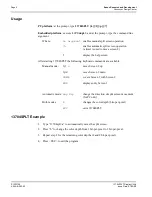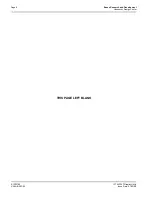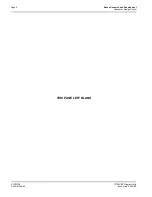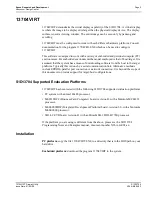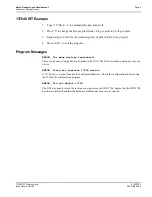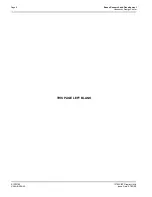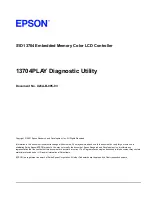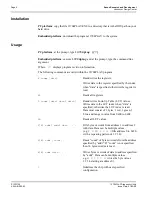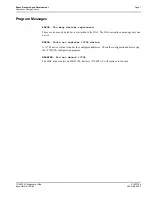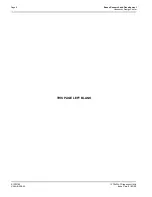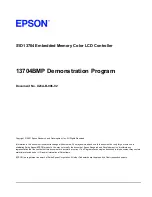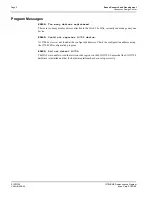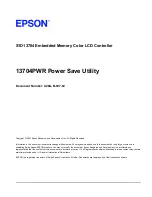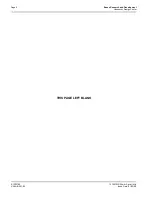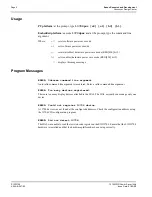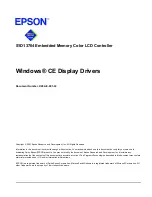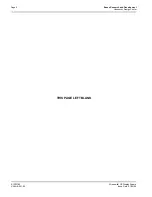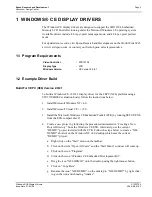
Page 6
Epson Research and Development
Vancouver Design Center
S1D13704
13704PLAY Diagnostic Utility
X26A-B-005-03
Issue Date: 01/02/08
Scripting
13704PLAY can be driven by a script file. This is useful when:
• there is no standard display output to monitor command entry and results.
• various registers must be quickly changed faster than can achieved by typing.
• The same series of keystrokes is being entered time and again.
A script file is an ASCII text file with one 13704PLAY command per line. All scripts must
end with a “q” (quit) command in order to return control to the operating system. The semi-
colon is used as a comment delimitor. Everything on a line after the semi-colon will be
ignored.
On a PC platform, a typical script command line is: “13704PLAY < dumpregs.scr >
results”.
This causes the script file “dumpregs.scr” to be interpreted and the results to be sent to the
file “results.”
Example 1: The script file “dumpregs.scr” can be created with and text editor and will look
like the following:
; This file initializes the S1D13704 and reads the registers
i
; Initialize the registers.
xa
; Dump all the registers
la
; And the LUT
q
; Exit
Comments
• All numeric values are considered to be hexadecimal unless identified otherwise. For
example, 10 = 10h = 16 decimal; 10t = 10 decimal; 010b = 2 decimal.
• Redirecting commands from a script file (PC platform) allows those commands to be
executed as though they were typed.
*

